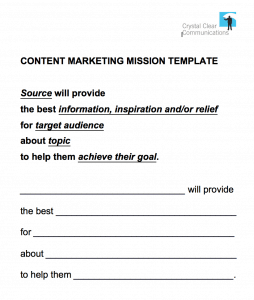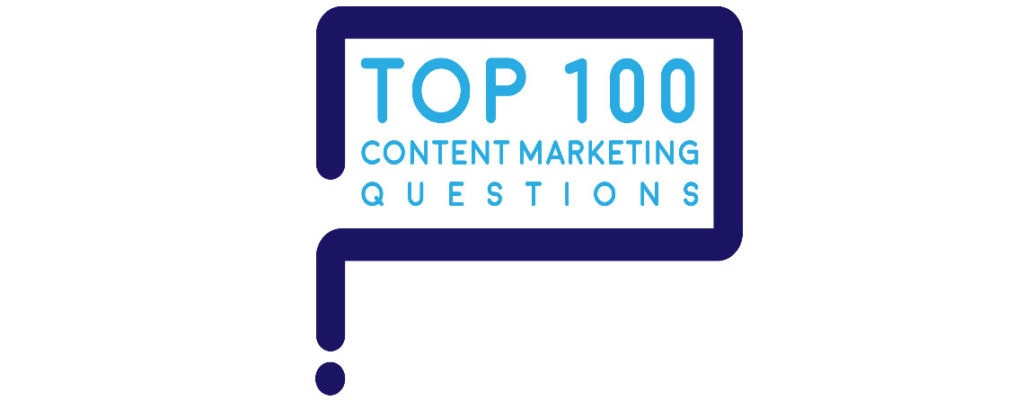
Top 100 Content Marketing Question: How to help subject matter experts (SMEs) understand the need for content marketing?

To help SMEs understand content marketing, start with one idea. There are only 2 kinds of pages on the Internet, as Andy Crestodina observes – selling and information pages.
That’s a crucial distinction.
Content marketing is all about creating great information pages that lead gracefully to selling pages. Help SMEs understand content marketing, so they see that brands need both kinds of pages to sell effectively.
Make content marketing into a big tent that you bring SMEs and others into. Here’s how:
1. Make content marketing a shared experience
Host content marketing workshops where you can learn side-by-side with SMEs. Make sure workshops include marketing, SMEs, sales, product management, and agencies or freelancers.

Get everybody together in one room, face to face. Designate a facilitator to establish:
- An agreed-on definition of what is content marketing (hint: it’s not the same as content)
- What other companies are doing in content marketing
- What content marketing success looks like
- How to achieve success, by building your program one step at a time.
Co-create your content marketing mission and strategy
In a workshop, your team and SMEs gain a common language, plus tools and templates they can put to work right away.
In my content marketing workshops, we co-create a content marketing mission statement (also known as a content marketing editorial mission statement). It gets everyone on the same page, and serves as a litmus test for which content to create.
Use this content mission template.

After agreeing on your content marketing mission, the team co-creates a one-page content marketing strategy. The strategy aligns content marketing with the needs of the business by spelling out:
- 3 company objectives, what the company needs to achieve over the next year
- 3 company goals, to measure achievement of objectives quantitatively
- 3 marketing strategies, to guide content marketing activities in the year ahead
- 3 marketing metrics, to measure achievement of strategies quantitatively.
The strategy also defines who is the target audience, what’s in it for them, and what calls to action will move content users from learning to buying.
Use this one-page content marketing strategy template.

Co-create your marketing message
Once your mission and strategy are mapped out on a single piece of paper, it’s time focus on the marketing message.
Make sure you can hook your audience in 7 seconds or 23 words by co-creating a Message Map. Here’s how to create a Message Map.
Once the home base message and 3 or 4 positive points are agreed on, your brand has a 7-second message to hook your audience.
Then, scale your message up to 2 minutes by adding proof points. Expand your message up to 20 minutes by adding examples.

A Message Map shows you what to say, so you say what you mean across all media – live, digital and printed. With a Message Map, you share consistent messages with all your audiences – customers, distributors, employees, influencers and investors.
When you co-create your message with SMEs and sales at the same table, you build inter-departmental buy-in much faster. For marketers, that means less struggling on the way to realize your content marketing intentions.
2. Be customer-centric
Never assume SMEs know what you Marketing knows, no matter how obvious it seems. Show sales and SMEs evidence of customers’ digital behaviors.
Present findings from:
Buyer persona research yields insights that sales and SMEs may not be aware of. Enlighten them by sharing your research to show:
- How buyers decide to start looking for a solution
- How buyers seek information and find answers to questions
- How buyers seek out thought leadership and social proof
- How buyers need different types of content at different points along their journey.

Seeing what buyers do offstage adds a new, empathetic dimension to any demographic, firmographic and segmentation research that your company has.
To help SMEs understand what’s on customers’ minds and in their hearts, gather and analyze customer questions. Identify buyers’ Top 100 Questions; here’s how.
Enlist SMEs to help buyers by creating content that answers their questions. To help get the job done, SMEs can write answers themselves, interview with writers, or curate source material.
Answering customers’ questions creates immense authority and value.
When everyone in the company knows customers’ key questions and answers them the same way, you’ve become your customers’ best teacher. That’s valuable not only to customers, but also to SMEs, sales and others.
Share marketing analytics with SMEs, to show exactly what customers are doing on your website, news and social media. Get SMEs familiar with the trends, so they see first-hand what’s working and what’s not working.
3. Help SMEs build their personal brands.
Everyone has a personal brand to build. Teach SMEs how to build their brands as they cooperate with you on content marketing.

Play to SMEs’ egos by offering them opportunities to create content as they:
- Serve on an editorial board responsible for content.
- Write articles with bylines.
- Get quoted on the website, or in external and internal newsletters.
- Perform on webinars and podcasts.
- Interview with news media, analysts, bloggers and influencers.
- Speak at internal and external events.
- Build their LinkedIn and social media presence.
Takeaway
In summary, help SMEs understand content marketing by creating a shared experience, being customer-centric and helping them build their personal brands.
This blog, How can you get your organization or team engaged in content marketing?, can help you get more buy-in for content marketing inside your company.

“How to help colleagues outside of marketing – subject matter experts (SMEs) – understand the need for content marketing?” is one of marketers’ Top 100 Questions on content marketing. Here are the answers.
What’s your question? E-mail me your content marketing questions at info@crystalclearcomms.com.
Related Posts
Creating a strategic message? Think like your audience
Creating a strategic message helps companies deliver a clear, compelling message to the market. My business partner George Stenitzer and I have conducted hundreds...
Marketers: Are you getting value out of your analytics?
The field of marketing analytics has been around for years, yet many marketers I speak with still feel they’re not getting the most out...
News media interviews: What to say when you can’t say
Do you ever get frustrated when you’re reading or watching a news media interview and the interviewee doesn’t answer a question? He or she...
Top 100 Content Marketing Question: What are the top 3 most popular types of content marketing? Which are most effective?
Research reveals the most popular and effective types of content marketing in 2023 Surveys by the Content Marketing Institute (CMI) and Marketing Profs B2B...





